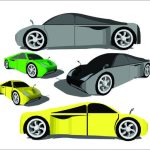1. Introduction to Automated Parking Assist
Automated Parking Assist (APA) is a driver-assistance feature designed to help drivers park their vehicles with minimal effort. This technology is becoming increasingly common in modern cars, offering convenience and reducing the stress associated with parking in tight spaces.
How Automated Parking Assist Works
APA systems use a combination of sensors, cameras, and software to detect suitable parking spots and guide the vehicle into them. The driver typically activates the system by pressing a button, and the car takes over steering while the driver controls the speed and braking. Some advanced systems can even manage acceleration and braking without driver input.
Key Components of an APA System
| Component | Function |
|---|---|
| Sensors | Detect obstacles and measure parking space dimensions. |
| Cameras | Provide visual guidance and enhance accuracy. |
| Software | Processes data from sensors and controls steering. |
Increasing Adoption in Modern Vehicles
More automakers are integrating APA technology into their vehicles, especially in mid-range and high-end models. As self-driving technologies continue to evolve, parking assist systems are becoming more sophisticated and reliable, making parking easier and safer for drivers.
2. How Automated Parking Assist Works
Automated Parking Assist (APA) uses a combination of advanced technologies to make parking easier and safer. This system relies on various sensors, cameras, and control units to guide the vehicle into a parking space with minimal driver input. Here’s how it works:
Sensors: Detecting the Surroundings
The APA system uses ultrasonic sensors, radar, and sometimes LiDAR to scan the environment. These sensors detect objects, curbs, and other vehicles to measure available parking spaces and ensure a safe parking maneuver.
Cameras: Enhancing Visibility
Many APA systems include cameras that provide a 360-degree view of the surroundings. These cameras help detect obstacles and improve accuracy when positioning the car in a parking space.
Control Systems: Automating the Maneuver
Once the system gathers data from sensors and cameras, the control unit processes the information and determines the best way to park the car. Some APA systems require the driver to control braking and acceleration, while more advanced versions handle everything, including steering, braking, accelerating, and shifting gears.
How Different APA Systems Work
| Type of APA System | Driver Involvement | Features |
|---|---|---|
| Semi-Automated | Driver controls acceleration and braking | Automates steering into parking spots |
| Fully Automated | Minimal or no driver input | Handles steering, braking, acceleration, and gear shifting |
Steps of the Automated Parking Process
Step 1: Scanning for a Parking Space
The system identifies available parking spots using sensors and cameras as the vehicle moves past them.
Step 2: Displaying Parking Options
Once a suitable space is found, the system notifies the driver and gives the option to activate automated parking.
Step 3: Initiating Parking Maneuver
After activation, the vehicle starts parking with the help of automated steering and, in some systems, automated braking and acceleration.
Step 4: Completing the Parking Process
The car gradually adjusts its position until it is correctly parked. In advanced systems, the vehicle can even exit the parking spot using the same automated technology.
By combining sensors, cameras, and intelligent control systems, Automated Parking Assist takes the stress out of parking, making it more accessible and efficient for drivers.

3. Types of Parking Supported by APA
Automated Parking Assist (APA) helps drivers park their vehicles with ease by handling steering and sometimes even braking and acceleration. This system supports different types of parking scenarios, making it a valuable feature for urban driving and crowded parking lots.
Parallel Parking
Parallel parking is one of the most challenging parking maneuvers, especially in tight spaces along the street. APA scans available parking spots and guides the vehicle into the space with minimal driver input. The system manages the steering while the driver controls the gear shifts, braking, and acceleration, or in fully automated versions, the car handles everything.
Perpendicular Parking
Perpendicular parking is common in parking lots, where vehicles park at a 90-degree angle to the curb. APA assists by accurately aligning the car within the lines, ensuring an easy and efficient parking process without the need for multiple adjustments.
Angle Parking
Angle parking involves vehicles entering a parking spot that is diagonally aligned, making it easier than parallel parking but still requiring precision. APA helps position the car correctly at the right angle, reducing the risk of parking too close to other vehicles.
Comparison of APA Parking Support
| Parking Type | Difficulty Level | How APA Helps |
|---|---|---|
| Parallel Parking | High | Scans for a spot and steers the vehicle automatically |
| Perpendicular Parking | Medium | Assists in aligning the car into the space |
| Angle Parking | Low | Positions the car at the correct angle with ease |
With APA, drivers can park more confidently, reducing stress and minimizing the risk of parking errors. Whether parallel, perpendicular, or angle parking, this system provides helpful assistance, making parking more efficient and convenient.
4. Benefits of Automated Parking Assist
Improved Safety
One of the biggest advantages of Automated Parking Assist (APA) is improved safety. Many parking accidents happen due to human error, misjudging space, or poor visibility. APA uses sensors, cameras, and algorithms to ensure precise parking, reducing the risk of scratches, dents, or collisions.
Reduced Stress
Parking can be stressful, especially in tight spaces or crowded areas. Drivers often feel pressure from traffic or pedestrians while trying to park. APA takes control of the process, helping to eliminate the anxiety of maneuvering into a parking spot.
Enhanced Convenience
APA adds convenience by handling complicated parking maneuvers automatically. Whether its parallel parking, perpendicular parking, or even exiting a tight space, the system makes the process smoother and quicker. This is especially useful in urban environments where parking can be a challenge.
Optimized Parking Efficiency
With precise control, APA allows vehicles to park in tighter spaces that drivers might otherwise avoid. This helps maximize the use of available parking spots and can be particularly beneficial in busy parking lots or garages where space is limited.
Comparison of Manual Parking vs. Automated Parking Assist
| Feature | Manual Parking | Automated Parking Assist |
|---|---|---|
| Risk of Scratches & Dents | Higher due to human error | Lower due to precise sensors |
| Stress Level | Can be high in crowded areas | Reduced as the system assists |
| Time Efficiency | Varies by driver skill | Faster and more consistent |
| Space Utilization | May leave unnecessary gaps | Maximizes available space |
5. Limitations and Challenges of APA
Automated Parking Assist (APA) systems offer a great level of convenience, but they also have certain limitations and challenges. These factors can impact their performance and reliability in real-world scenarios. Understanding these drawbacks can help drivers set realistic expectations when using APA.
Environmental Factors
APA systems rely on sensors and cameras to detect parking spaces and obstacles. However, various environmental conditions can interfere with their effectiveness.
| Environmental Factor | Potential Impact on APA |
|---|---|
| Bad Weather (Rain, Snow, Fog) | Can reduce visibility and sensor accuracy, leading to errors in detecting spaces or obstacles. |
| Poor Lighting | Camera-based systems may struggle in low-light or overly bright conditions. |
| Obstructed Sensors | Dirt or debris on sensors can prevent accurate readings, hindering APA performance. |
Technology Dependencies
APA systems heavily depend on advanced technologies such as cameras, sensors, and artificial intelligence. While these components improve parking accuracy, they also introduce certain challenges.
Sensor Limitations
Sensors have a limited range and may not always detect small or low-profile obstacles, such as curbs or bicycle racks.
Software Errors
Like any computerized system, APA software can experience glitches or bugs that lead to unexpected behavior while parking.
System Compatibility
Not all APA systems work seamlessly in every parking scenario. Some may struggle with non-standard parking spaces or irregularly shaped obstacles.
Driver Over-Reliance
Although APA is designed to assist drivers, its not a substitute for human judgment. Over-reliance on the system can lead to a lack of parking skills or slow reactions when manual intervention is needed.
6. The Future of Automated Parking Technology
Automated parking technology is evolving rapidly, and the future holds exciting possibilities for drivers and urban mobility. Advancements in artificial intelligence, full automation, and smart city integration will make parking systems even more efficient, convenient, and safer.
Full Automation: Hands-Free Parking
One of the biggest future advancements in automated parking is the move toward full automation. With this technology, drivers wont need to manually park their vehicles at all. Advanced sensors, cameras, and AI will work together to navigate parking lots and garages without any driver input. This means reduced stress, increased parking efficiency, and better space utilization.
AI Integration: Enhancing Accuracy and Safety
Artificial intelligence will play a crucial role in making automated parking smarter and more reliable. AI-powered parking systems will analyze parking behavior, detect obstacles in real time, and optimize vehicle movement. With machine learning, these systems will improve over time, making parking even smoother and reducing the risk of accidents.
Smart City Connectivity: Integrated Parking Systems
As cities become more connected, automated parking will integrate with broader smart city networks. Vehicles will communicate with parking infrastructure, allowing drivers to reserve spots, find available spaces more easily, and receive real-time updates on parking conditions. This will help reduce congestion and make urban transportation more efficient.
Comparison of Current and Future Automated Parking Systems
| Feature | Current Technology | Future Advancements |
|---|---|---|
| Parking Control | Driver-assisted with automated steering | Fully autonomous parking without driver input |
| Obstacle Detection | Basic sensor-based detection | AI-powered real-time obstacle recognition |
| Connectivity | Limited vehicle-to-infrastructure communication | Smart city integration with real-time data sharing |
| Parking Efficiency | Reduced but still dependent on driver action | Optimized space utilization with AI assistance |
The Road Ahead for Automated Parking
The future of automated parking is promising. As full automation, AI, and smart city connectivity continue to develop, parking will become more convenient and stress-free. This evolution will not only benefit individual drivers but also contribute to more efficient and organized urban mobility.


